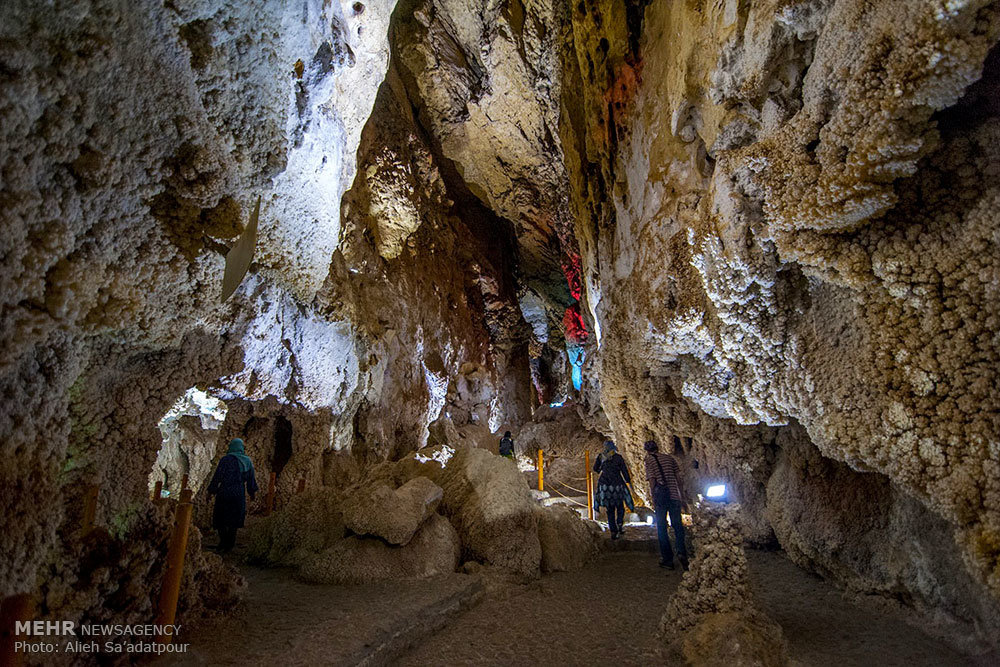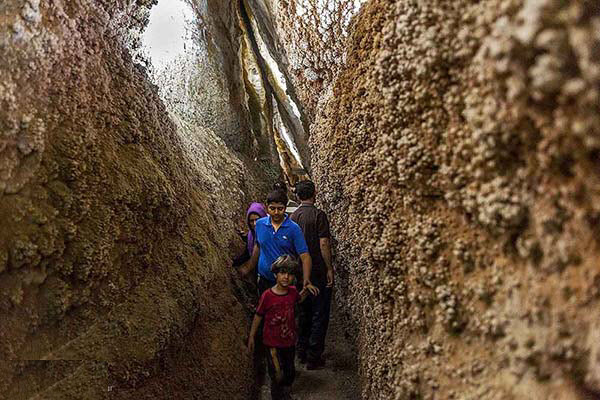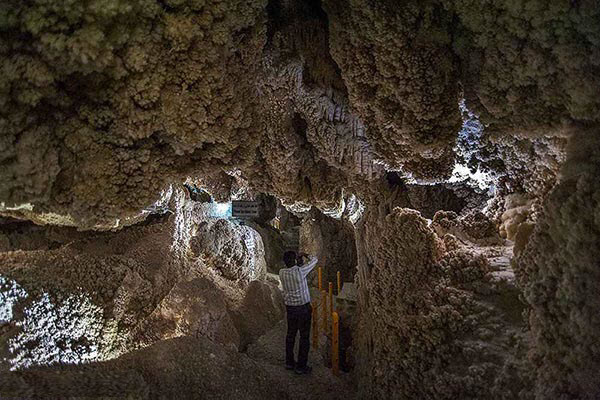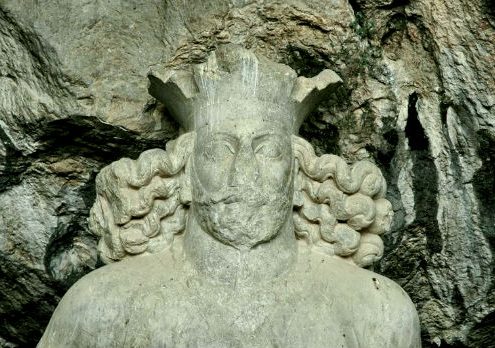
Shapur Statue inside Shapur Cave
This cave is located on the heights overlooking Chogan Valley, about 6 km from the ancient city of Bishapur in the south of Iran. Shiraz is one of the cities from where you can start your trip to get there.
Now imagine you’re up there. What appears in front of your eyes is a huge statue standing in front of you not far ahead. He’s Shapur I, the second king of the Sassanid Empire. Yes, it’s really surprising to see such a huge statue in a cave at the top of a mountain. But it’s not the only thing that can surprise you.
Sculptures and rock reliefs have formed an outstanding part of Sassanid art. Although such carvings benefited less popularity at those times as compared to the other ancient periods, they’ve done the best in depicting some significant figures and events.
What You Need to Get to Shapur Cave
- Because of the steppe climate in this region, you’ll need cotton clothes in light colors if you want to be there in spring or summer. But if your trip is in fall or winter, you’ll need warm clothes. The annual precipitation is very low in this region but to be assured of your comfort, have a raincoat with yourself.
- You’ll need suitable and comfortable footwear because you have to go up the carved stairs with about 230 treads to get to the entrance of the cave. Or you can hike the steep slope of the mount if you wish. It can be challenging but you don’t need to be a professional mountain climber.
- Have a bottle of water with yourself. There’s no access to drinking water in the cave. It takes about an hour and a half to get there. It’s rather a long way and makes you tired and thirsty.
Now It’s Time to See the Real Surprise
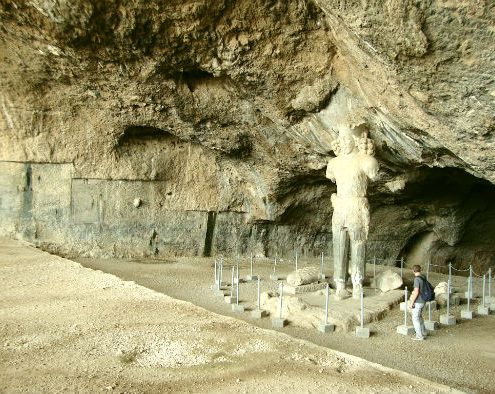
Shapur Statue inside Shapur Cave
So, to see the real surprise, you have to reach a cave which is located at a height of about 800 meters above the mountain foot. The entrance of the cave is about 30 meters wide and 15 meters high, and its length is about 450 meters from the entrance to the end. It’s called Shapur cave because the enormous statue of Shapur I is there.
Yes, this remarkable manifestation of Sassanid art is so impressive. The height of this statue is about 7 meters and the shoulders are more than 2 meters wide. It’s carved out of a stalagmite in this limestone cave and dates back to about 17 centuries ago. It’s the only sculpture this large remaining from the ancient times in Iran.
Shapur I was one of the most powerful Persian kings who achieved great victories against the Romans. In his last war with the Romans in early 260 A.D., he arrested the Roman Emperor and imprisoned him in the ancient city of Bishapur, 6 km from the cave, and therefore, the Roman Empire was dominated for a long time. This victory attracted attention of the civilized world of the day to the power of the Sassanid Empire.
Other Attractions in and around Shapur Cave
- There are two pieces of stone inscription cut in the wall of the cave. One of them dates back to the ancient times in Sassanid period. It is the translation of a piece of inscription attributed to Shapur. The other one belongs to the contemporary times and talks about how the statue was raised again after about 14 centuries in 1957. It was pulled down after the Arabs invasion of Iran and the collapse of Sassanid dynasty.
- As you go further into the cave, you can see two water reservoirs dug in stone. They are about one meter deep and have stairs for access to water. Water dripping from the ceiling of the cave was collected in these ponds. The locals used to provide drinking water from these ponds.
- There is a beautiful flowstone by the reservoirs on the left. At the back of this flowstone, you can see some of most eye-catching stalactites and stalagmites.
- As you explore in depth of the cave, you encounter a very large hole in the floor with a diameter of about 100 meters. It reminds you of dry lakes. It’s about 30 meters deep from the front hall floor.
- Passing the hole, on the left, there’s a flat area partially created by locals. It seems it was used as a spot for ceremonies or offering sacrifices. The height of the ceiling in this hall is about 40 meters. It’s the highest point of the cave’s ceiling.
It’s said that the dead body of Shapur I is buried somewhere in this cave. There is also another legend narrated by the locals about this issue. It says that Shapur, being defeated in a war, took refuge in this cave. Since then he has been disappeared and his body has never been found.
These are not the only wonderful attractions in the region. You can take a tour to visit the other ancient spots near Shapur cave. Among them all, I suggest visiting the ancient city of Bishapur and Chogan Valley rock-reliefs. There you can learn much more about Sassanid art and get hugely surprised, too.

